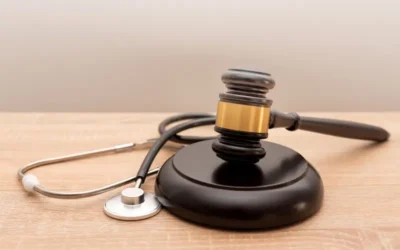Any personal injury case involves medical record review to extract the relevant medical evidence. The medical documentation demonstrates the injuries sustained by the plaintiff, the extent of pain he or she experienced, treatments given, ongoing conditions, and the impact of the injury on the plaintiff’s current and future life. Three important considerations are there in a personal injury claim, i.e. Liability, Causation and Compensation. Liability is the consideration whether the defendant is to be blamed for the accident and injury; Causation is related to whether the injury was directly caused by the accident; and Compensation deals with how much compensation the injured person should receive. Causation is proved by the information available in the plaintiff’s medical records. The plaintiff or his/her attorney has to prove that the injury was caused or contributed to by the accident.
When performing medical record review for attorneys, the first step is ensuring that a complete copy of the plaintiff’s medical records is obtained. So, how can attorneys ensure that they receive a full set of the medical records?
- First, a HIPAA-compliant authorization signed by the plaintiff must be obtained.
- Understand which medical records are to be retrieved. The required documentation includes the following:
- Diagnosis and prognosis records: These should also include the treating doctor’s remarks on the patient’s condition and the treatment results after the injury. This will make it clear why a particular treatment was provided and also why that treatment was chosen over another alternative.
- ER (Emergency Room) records: ER records are different from regular hospital records. These are separately created for patients treated in an emergency room.
- Treating physician’s findings regarding the reason for the injury.
- Primary medical procedure notes: These records will establish the connection between each service/procedure performed by the provider, and also highlight the subtle details on how they were performed.
- Pre-existing conditions, if any, and related medical records.
- Prescriptions and medications given to the patient to treat the injury.
- Follow-up treatment plan: These are documents containing details regarding post-discharge follow-up with the doctor or another provider.
- Test reports, X-rays, MRI and CT scans
- Itemized bills
Two different versions of the medical chart include the Legal Medical Record set and the Designated Record Set. The former is made available to the attorney making the request.
The Legal Medical Record set comprises records that contain information used by the patient care team to make decisions about the treatment of a patient. It does not include billing data.
Under HIPAA, the patient has the right to a Designated Record Set. The Designated Record Set does not always include outside records such as nursing home/referring hospital records. This category of medical records comprises a group of records maintained by or for a covered entity and may include patient medical and billing records; enrollment, payment, claims, adjudication, and cases or medical management record systems maintained by or for a health insurer; or information used in whole or in part to make decisions related to patient care. The Designated Record Set is more extensive than the Legal Medical Record Set.
It is important to understand that even if some data is not included in these categories of medical records, it is still discoverable. Such data includes source data such as imaging records, sticky notes, EKG strips, video surveillance, and audit data/logs/trails.
A complete copy of all the medical records related to the injury is essential. Any missing record may contain information that supports the plaintiff’s claim or case. This is where medical record review for attorneys becomes crucial because it helps determine whether the records contain a reference to some treatment or provider that is not contained in the records obtained. Once this is known, those missing records can also be obtained at the earliest. A thorough medical record review would also ensure an analysis and summarization of the CPT codes in the medical bills to make sure that medical records associated with each service are available. Another important thing for plaintiff attorneys is to make sure that a copy of the medical records and bills retrieved by the insurer is also obtained and compared with the medical records received by the attorney’s firm. If the insurer has obtained additional records, those must be retrieved as well.
Gathering the various medical records and other documentation relevant for a personal injury case can be quite challenging and time-consuming. Attorneys will find the service of a medical record review company useful in this regard. The outsourcing medical review company will make sure that no medical records are missing and will take all the necessary steps to obtain a full and complete copy of the records.




